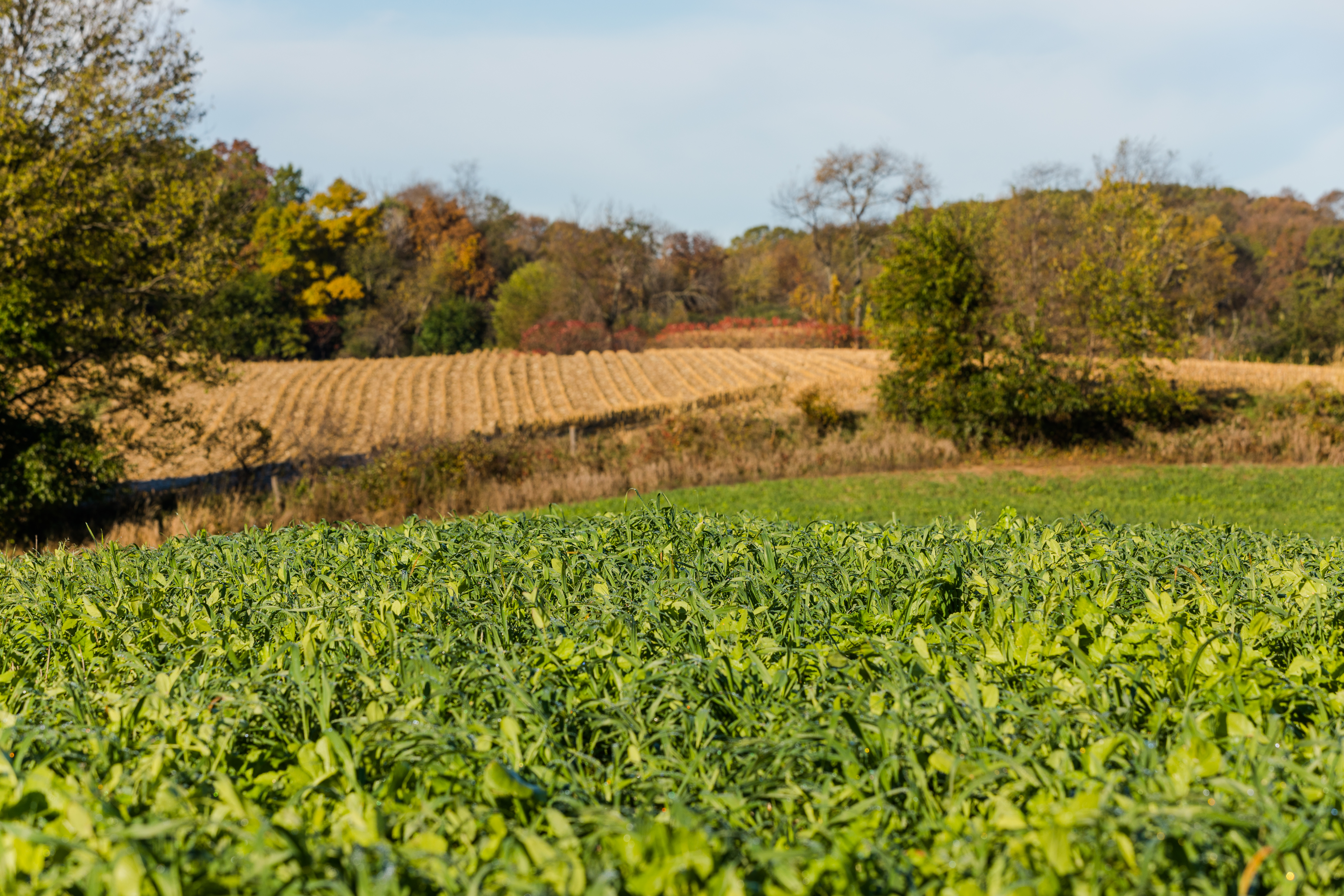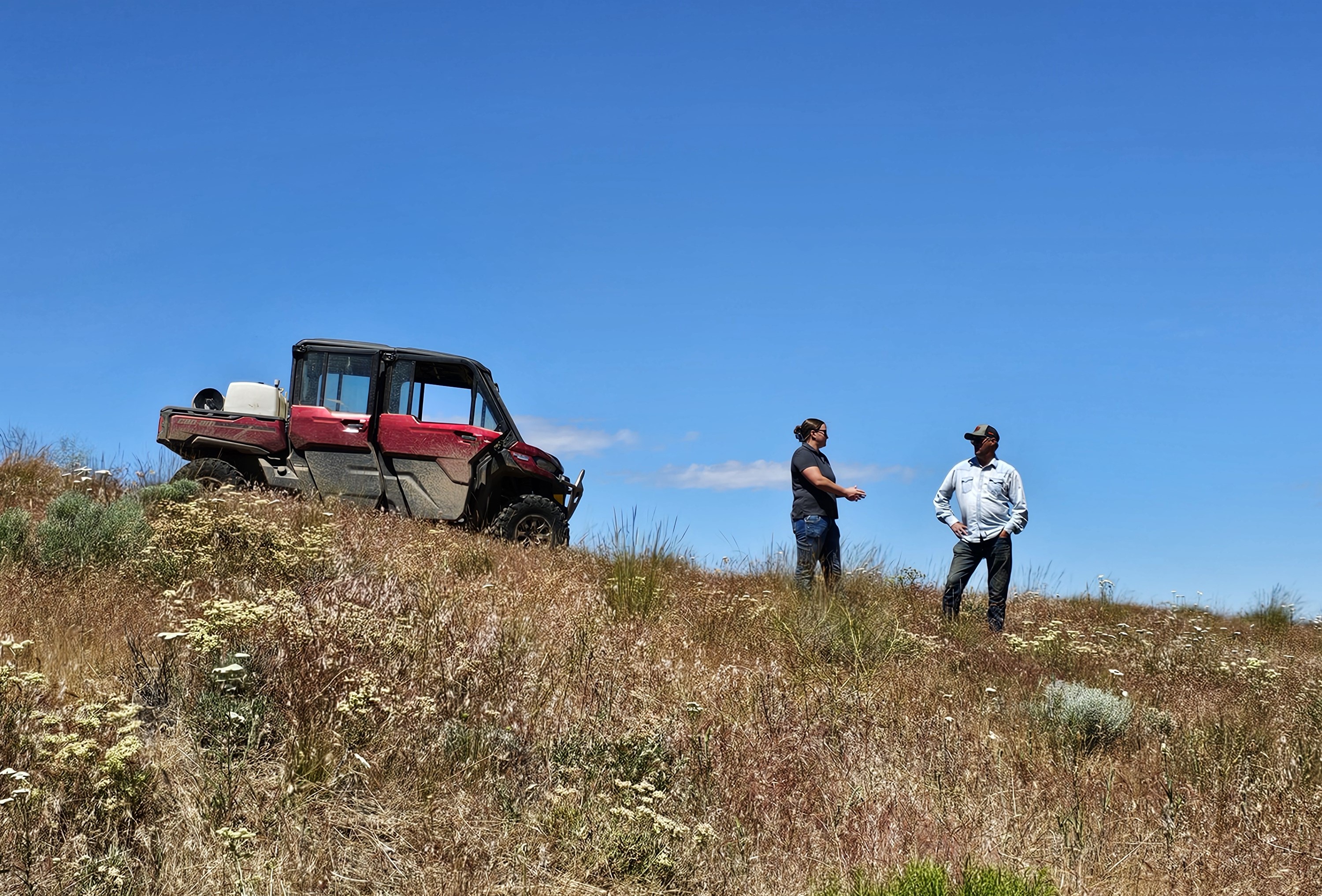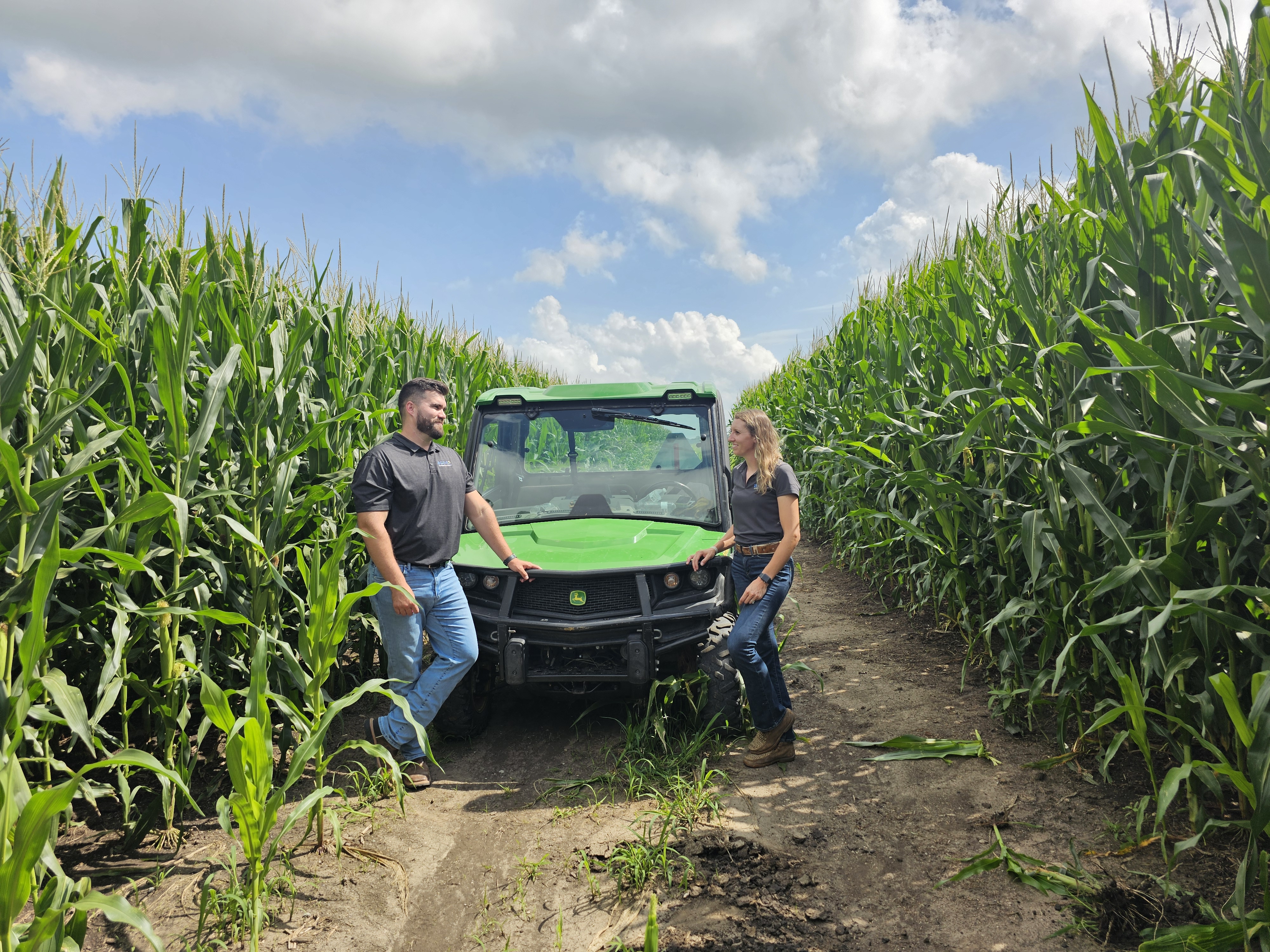Cover crop costs can vary widely depending on several factors—your location, the species you plant, how you seed, and when you do it. Estimating costs can be tricky, but let’s walk through a common example.
In the Midwest, cereal rye is by far the most popular cover crop choice. While some farms use oats, wheat, triticale, or diverse species mixes, cereal rye consistently leads the way—and for good reason. It’s extremely winter-hardy, making it ideal as a winter cover.
Cover Cropping in Iowa: Dollars, Dirt, and Decisions
Cereal rye can grow in temperatures ranging from 38°F to 68°F, meaning even late-seeded crops can establish some growth during the colder months. This resilience makes it a reliable and effective option for many operations across the region.
On our farm, we have beef cattle, so we get extra benefit from having cover crops growing in our fields close-by. Because of that, we typically seed a heavier rate of seed than most. The minimum rate for cereal rye to qualify for State of Iowa and NRCS cost share programs is 45 lbs. per acre, so there will be farms that seed the minimum typically up to 60 lbs. per acre. We typically seed 90-100 lbs. to add more forages for the cows.
There are a number of seeding methods that work in our area also. Some methods such as aerial and drone application allow for early establishment but may sacrifice stand establishment due to poorer seed to soil contact. Other methods such as drilling or broadcast spreading with a tillage tool allow for better seed to soil contact, but may sacrifice time to get that cover crop established. Some farmers explore other methods such as spreading seed with the combine, interplanting early in the season while the crop is still growing, 60-inch row corn, etc. but those methods are much more rare to see used.
Cover crop termination has the potential to add more cost to the operation also. Most farms spray and herbicide to terminate. Some may try roller crimping, but crimpers are difficult to find and add an extra cost. If timing works out right for the operation, many times the pre-plant herbicide mix can be used to terminate the cover crop as well, but that is dependent on what is in the mix. If not, an additional application of herbicide is needed to make sure the cover crop is terminated sufficiently.
An example on our farm comparing different applications and their costs:
- Cereal rye seed at $0.27/lb.
- Aerial seeding at $17/acre
- Drone seeding at $20/acre
- No-till drilling at $22/acre



For one of our fields, here is the cost of implementing the cover crop practice. That cost is above and beyond the current input costs for the field.
- Cereal rye seed $24.30/acre ($0.27/lb. x 90lbs = $24.30/acre)
- Drone seed application $20.00/acre
- Termination (glyphosate) $10.60/acre
- Herbicide application $0.00/acre (applied with planned pre-emerge herbicides)
TOTAL $54.90/acre
Another common example for a typical row crop farmer in Iowa:
- Cereal rye seed $12.15/acre ($0.27/lb. x 45 lbs. = $12.15/acre)
- Aerial seed application $17.00/acre
- Termination (glyphosate) $10.60/acre
- Herbicide application $7.00/acre
TOTAL $36.75/acre
One important factor often left out when calculating costs is the range of benefits cover crops bring to a farm. Many farmers report gaining additional workable days in the field, especially during planting season. This can lead to crops being planted days or even weeks earlier thanks to improved soil conditions.
Enhanced water-holding capacity is another key advantage—meaning less runoff, better moisture retention, and more consistent water availability for crops. Whether it’s too much rain or not enough, soils with higher water-holding capacity are better equipped to handle the extremes. Weed suppression is yet another potential benefit. When cover crops are allowed to grow later into the season, they can outcompete and crowd out weeds. In some cases, this may even reduce the need for an herbicide pass—though success depends on timing, growth conditions, and proper termination of the cover crop.
While the soil health improvements from cover crops are significant—leading to healthier soils and stronger plants—the costs are real and must also be considered in any evaluation.



